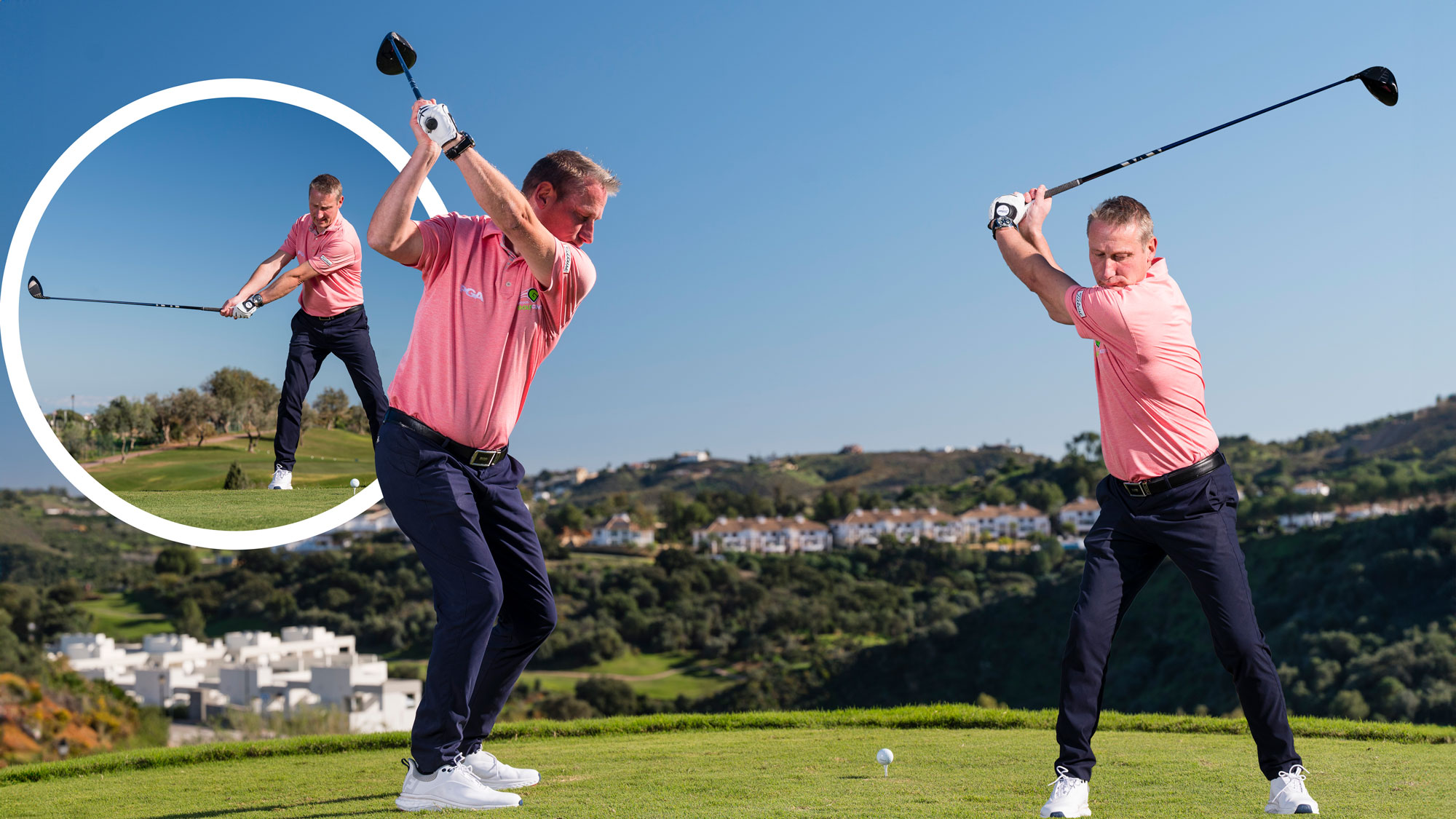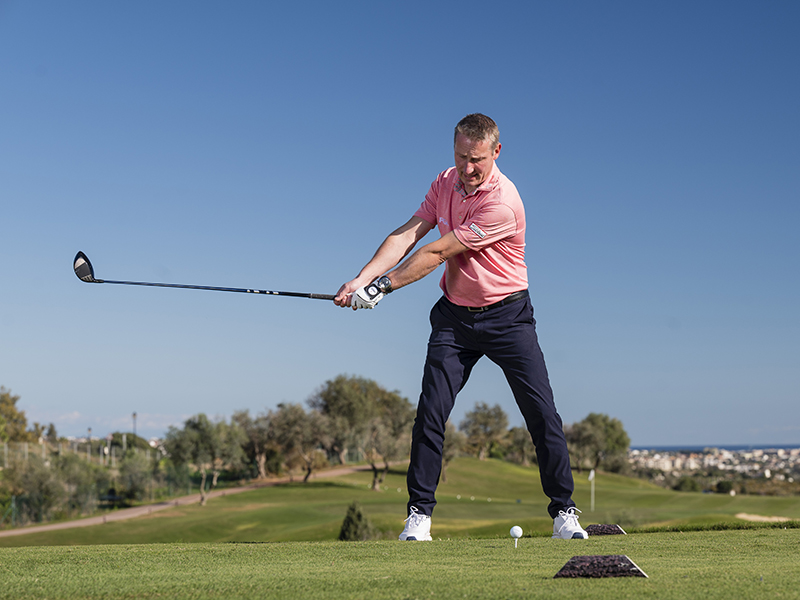Driver Backswing – I'm Certain This Simple Guide Will Help You To Generate More Power
The driver backswing is an opportunity to fill up our power store, ready to unleash it later in the golf swing. Our PGA Master professional shares his best tips


Anders Mankert
The driver backswing is an element that so many amateurs struggle with when learning how to hit a driver, with power-sapping faults ultimately costing them later down the line in the golf swing.
Once you have nailed the driver setup position, the backswing is the next link in the chain - allowing you to generate and store the precious power that will help to generate the extra yards off the tee.
In this article, PGA Master Professional and Golf Monthly Top 50 Coach Anders Mankert shares his expert tips, providing a helpful guide to mastering the driver backswing whether you are searching for beginner golf tips or a seasoned pro in need of a little fine tuning...

Anders Mankert is the owner and head professional at Leicester Golf Centre, with a coaching career spanning more than 28 years.
In 2024, Anders received the title of Master PGA Professional - becoming only the 65th person in history to be awarded that accolade. His vast coaching experience has transformed the golf swing of many amateurs and professionals, while also striving to grow the game through his revolutionary work at Leicester Golf Centre.
Key Steps To Generating More Power
Feel free to bookmark this page and come back each time you need a refresher on how to effectively execute the backswing with driver. There are plenty of helpful tips in the article below, but here are some of the key steps for those of you that are itching to hit the range and start improving:
- Low and wide takeaway
- Maintain width throughout backswing
- Left shoulder moves over right knee as you wind up
- Knees slightly flexed
- Feeling of tightness - like a coiled spring
The Driver Backswing: My Expert Guide

The initial stage of the backswing is a low, wide takeaway
Low, Wide Takeaway
As the club moves away from the ball, the clubhead should remain very low to the ground in the initial stages of the backswing. Some amateur golfers have a tendency to pick the clubhead up very quickly, but this can lead to problems further down the line.
In terms of width, you need to feel as though you are maintaining plenty of width throughout the backswing, with your left arm straight and hands far away from your body.
Subscribe to the Golf Monthly newsletter to stay up to date with all the latest tour news, equipment news, reviews, head-to-heads and buyer’s guides from our team of experienced experts.

Maintaining width is key throughout the backswing
Effective Rotation
The way in which we rotate is hugely important to generating power in the backswing, but so many amateurs get this wrong and end up sapping their potential due to reverse pivots or a poor weight transfer.
A good reference point is ensuring that when you turn in the backswing, your left shoulder ends up over your right knee. This will feel tight, and a little uncomfortable at first, but it needs to be in order to reach our maximum power output during the driver downswing. The weight will then sit in the trail heel (right for right-handed golfers) until your start the downswing.
When doing this, it's important to maintain some flexion in our knees - as this will help to keep our base stable and our swing balanced. The shoulders will turn a lot more than the hips do, as if you turn everything the same you won't generate very much power at all. The sternum will need to stay behind the ball throughout the backswing, so not to alter your low point for the driver impact position.

The position at the top of the backswing should be tight, and will often feel a little uncomfortable as you coil up into a powerful position...
Common Misconceptions
When I teach amateur golfers, I sometimes see the weight remain on the lead foot as we rotate. In order to coil up effectively, and generate the most power possible, it's important that you transfer your weight onto the inside of your trail heel. Why not try some of the best golf exercises to build up your core strength and stability, as this will help you to feel less uncomfortable with that tight, wound-up position in the backswing with driver.

In this image, Anders demonstrates the incorrect way to start the backswing - where the weight remains on the lead foot and clubhead is picked up quickly
What is the correct swing path for a driver?
The swing plane, which is how the club moves around your body, will appear to be more rounded with driver. That's because if you were to look at someone swing with an iron or a wedge, they are more (bent) over the ball. This causes their spine angle to match that position, and therefore their swing plane is more upright.
With a driver, as the setup position is taller, the swing plane is more rounded around the body - again evidencing the necessity of the width in the golf swing to achieve this.
How long should the driver backswing be?
Many amateurs over-analyse how long the backswing should be, obsessing too much over the 'correct length'. In reality, there is no one-size-fits-all solution. Look John Daly and Jon Rahm, they are at totally different ends of the backswing length spectrum, but both have wielded their driver with plenty of success throughout their respective careers.

Baz joined Golf Monthly in January 2024, and now leads the instruction section across all platforms - including print and digital. Working closely with Golf Monthly's Top 50 Coaches, he aims to curate and share useful tips on every aspect of the game - helping amateurs of all abilities to play better golf. Baz also contributes weekly to the features section, sharing his thoughts on the game we love and the topics that matter most. A member at Sand Moor Golf Club in Leeds, he looks forward to getting out on the course at least once a week in the pursuit of a respectable handicap.
Baz is currently playing:
Driver: Benross Delta XT
3-Wood: Benross Delta XT
Hybrid: TaylorMade Stealth 4 Hybrid
Irons: Benross Delta XT 5-PW
Wedges: TaylorMade RAC 60, Callaway Jaws MD5 54
Putter: TaylorMade Spider Tour
- Anders MankertMaster PGA Professional and Golf Monthly Top 50 Coach